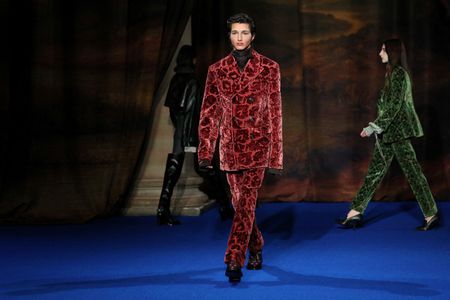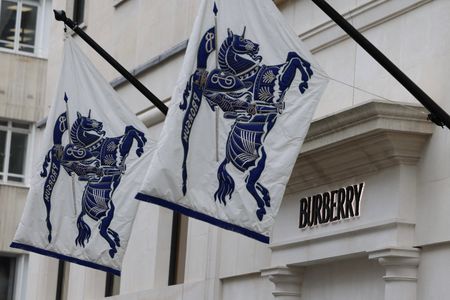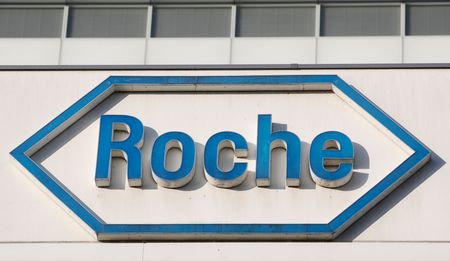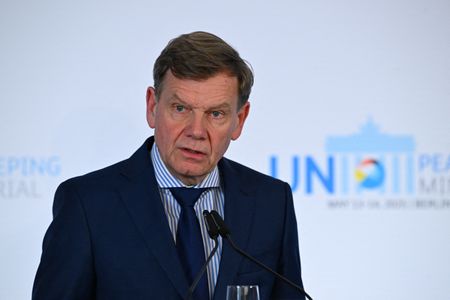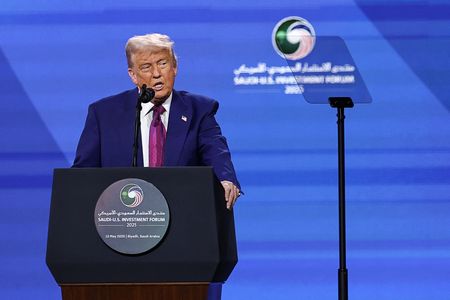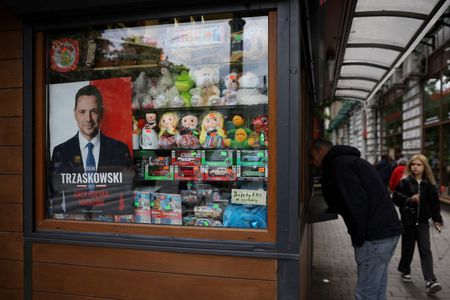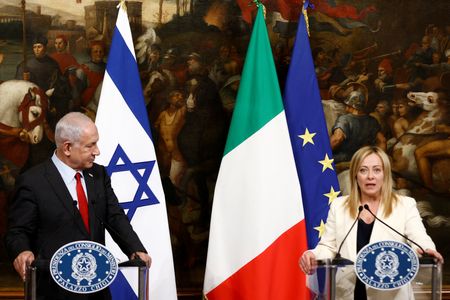By Helen Reid
LONDON (Reuters) -Burberry shares surged 18% on Wednesday after the British luxury brand announced plans to shed 1,700 jobs or around a fifth of its global workforce to cut costs to help revive its performance.
Burberry is in the early stages of a turnaround effort led by CEO Joshua Schulman, who is seeking to reverse the group’s years of underperformance versus luxury rivals.
The job cuts over the next two years will affect mostly office roles, and a night shift at Burberry’s trench coat factory in Castleford, England, will be cancelled.
Schulman said having two shifts at the factory had resulted in “overproduction”, and cutting the night shift was key to maintaining Burberry’s manufacturing footprint in the UK.
The CEO, formerly at Coach and Jimmy Choo, took over at Burberry last year and shifted its strategy to focus on marketing Britishness and selling more trench coats and scarves after the brand was bruised by product missteps, excessive price hikes, and a broader luxury downturn.
“The customers we want to grow, who have been declining for three years, are now excited about what they see,” Schulman said in a presentation to investors.
Burberry’s February fashion show drove “double-digit increases” in purchases from retailers who had significantly reduced their orders in the past two years, Schulman said.
The job cuts, along with other cost reductions, will result in an additional 60 million pounds of savings by 2027, Burberry said, on top of previously announced savings of 40 million pounds.
Shares in the group jumped 18% after the better than expected results and the positive tone of Schulman’s update.
“Clearly the compounding of better top line and lower costs would produce a significant profit progression,” said Bernstein analyst Luca Solca. “This is I think what the market is celebrating today – as management appeared confident they are on the right path.”
Schulman, who replaced Jonathan Akeroyd, is the fourth CEO of the British fashion house in 10 years.
Under Marco Gobbetti, who ran the group between 2017 and 2021 and hired designer Riccardo Tisci, the company had tried to move the brand towards the top end of luxury fashion, without much financial success.
Akeroyd, who took the helm in 2022, pinned his hopes on higher-margin leather accessories and on designer Daniel Lee.
The British label narrowly avoided a loss for its 2025 financial year ending March 29 with an adjusted operating profit of 26 million pounds ($34.55 million), beating analysts’ estimate of 11 million pounds.
Fourth-quarter comparable sales were down 6%, better than analysts’ average forecast for a 7% decline.
Sales in the Americas and the Europe, Middle East, India and Africa region both declined by 4% compared with last year, while sales in Asia Pacific were down 9%.
A worse outlook for U.S. consumer spending may pose a challenge for Schulman’s focus on American shoppers to boost Burberry sales.
“As we got into Q4, the U.S. customer was keeping their momentum but … things got a little choppy as we headed into February, particularly in the U.S. market,” Schulman told journalists.
The U.S. accounts for 19% of Burberry’s business, Chief Financial Officer Kate Ferry said.
“We do feel, wherever tariffs end up, that we have the levers to mitigate it,” she added, saying cost-cutting would help.
Other luxury brands have reported weakness in the U.S., with Gucci owner Kering on Tuesday saying there had been a stark decline in U.S. consumers buying its product.
“The U.S. was seen as a goldmine for all the luxury brands in the last part of last year, and then things turned pretty fast,” said Mario Ortelli, managing partner at luxury advisory firm Ortelli & Co.
(Reporting by Helen Reid, Additional reporting by Ben Makori and Gerhard Mey; Editing by Jan Harvey, Louise Heavens and Jane Merriman)

